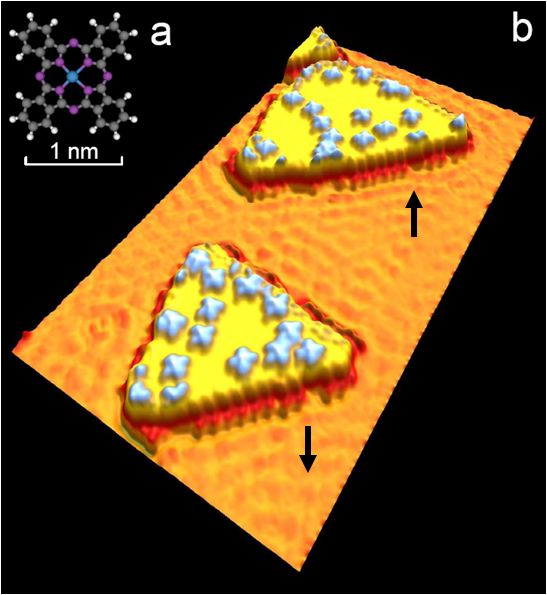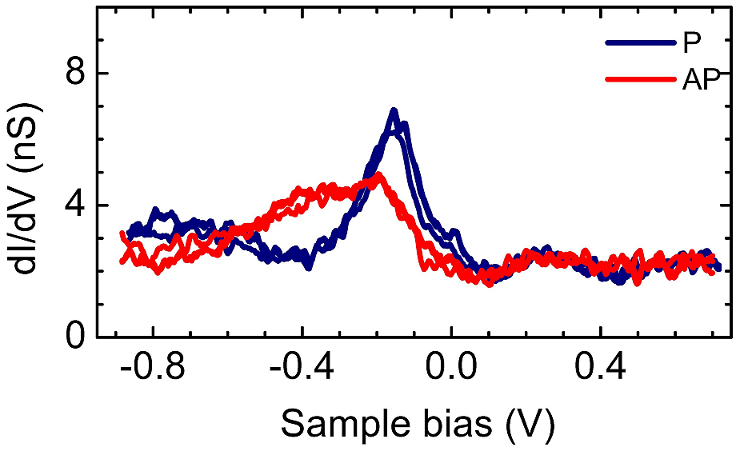In this approach, a magnetic tip of an STM is used as a probe electrode with a magnetization perpendicular to the surface and a Co nanoisland is used as a base electrode, with either up or down magnetization (see Fig. 1b) thus leading to parallel (P) and antiparallel (AP) configurations of the tunnel junction. Due to the strong exchange-coupling between the molecule and the underlying Co island, the magnetic moment of the molecule can adopt two spin orientations, that are clearly discernible in the spatially resolved differential conductance spectrum of the SP tunnel junction (Fig. 1c). A broad resonance at -0.16 eV is detected for molecules adsorbed on parallel (P) islands whereas a resonance of weaker amplitude is found for molecules on antiparallel (AP) islands. A direct visualization of spin state of the molecule, shows that the spin signal localizes at the Co atom, within a circular area of 0.8 nm lateral extension, while the aromatic cycles of the molecule do not contribute in this energy range.
The Co atom of the CoPc adopts a bridge position with respect to substrate atoms, driven by the chemical bond between the N and the Co atoms of the surface. Calculation provided in close collaboration with theorists from the TU Freiberg show that the states involved in the magneto-transport arise from the dz2, dxz and dyz orbitals of the molecule. The magnetization density reveals that the coupling between the molecule and the electrode is ferromagnetic with a direct contribution as well as an indirect superexchange contribution due to the particular configuration of the N atoms mediating the coupling with the surface. It is anticipated that the control over the adsorption geometry, and ultimately over the spin conductance, can potentially be achieved by a careful choice of the ligands that bind the molecule to the surface. I is likely that such experiments can be performed for many other magnetic molecular systems, eventually under external stimuli, such as magnetic fields, light or temperature variation.
[1] C. Iacovita, M.V. Rastei, B. Heinrich, Th. Brumme, J. Kortus, L. Limot, J.P. Bucher, Phys. Rev. Lett. 101, 116602 (2008).


